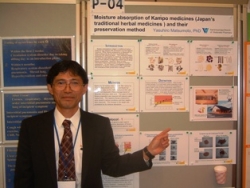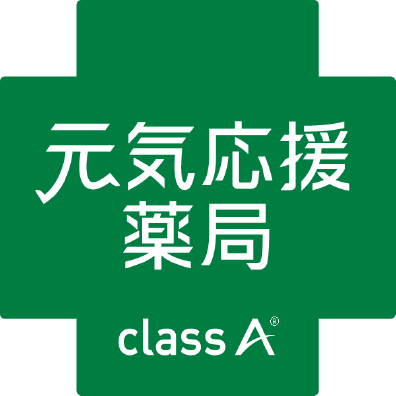★ 2006年 第21回アジア薬剤師連合学術大会(FAPA) ★
薬剤師になっての初めての国際学会の発表です。会社を辞めてから英語を使ってないので、文章が出てこない。抄録一つ書くのにも、結構、苦労しました。さらに、アジア圏の英語なのでこれが、大変!インドの発表者と会話した時は、チンプンカンプン・・・。いまさらながらに、英語力の衰えをひしひしと感じました。
でも、久しぶりに国際学会に行け、懐かしく思えました。ちなみに、薬局からは一切、補助が出ないので今回も自費でした。参加費が45000円です。これは大分県薬に頭下げてお願いしたら、参加の枠を一つ回してくれました。大分県薬に感謝!以下Abstrctです。
Moisture absorption of Kampo medicines (Japan’s traditional herbal medicines ) and their preservation method
Yasuhiro Matsumoto
Kamimiyanaga branchi of Watanabe Pharmacy
*Correspondence:yasuhirom@h3.dion.ne.jp
Kampo medicine (Japanese herbal medicine) is packed with aluminium to proof against moisture. When Kampo medicine is dispensed for children, Kampo medicine has to be let out from its package and repacked with glassine paper. Kampo medicine is susceptive to moisture, because water can pass through glassine paper. We have had many claims from parents of diagnosed infants about damping Kampo medicine. However, there is poor information about hygroscopic property of Kampo medicine. In this report, we investigated moisture absorption of Kampo medicines after repackage and considered their preservation method
Method: Kakkon-to-ka-senkyu-shin'i, Sho-seiryu-to, Bakumondo-to and Keishi-ka-shakuyaku-daito-to (Tsumura & CO), with which I had filled prescription in Kamimiyanaga branch of Watanabe pharmacy, were used. Two glam of the Kampo medicines were packed with glassine paper, respectively. The packed Kampo medicines were stored in various conditions and the weights of packed Kampo medicines were measured. The increase in the weight was considered as its moisture absorption.
Results: Weight of Kakkon-to-ka-senkyu-shin'i, Sho-seiryu-to, Bakumondo-to and Keishi-ka-shakuyaku-daito-to increased in a time-dependent manner. The rate of the increase of Sho-seiryu-to was less than that of the other Kampo medicines. Kakkon-to-ka-senkyu-shin'i and Keishi-ka-shakuyaku-daito-to changed their colour (Caking is observed). To consider the preservation method, we stored these Kmapo medicines in a ziplock, Tupperware (with desiccant), refrigerator, respectively. Tupperware and refrigerator prevented their moisture absorption. However, when Kampo medicines were put outside from these conditions twice a day, refrigerator, but not Tupperware, could keep away from moisture. This result implies the refrigerator is best way to store repacked Kampo medicine. To clarify which container is best to store in refrigerator, we used envelop, ziplock and Tupperware as container. Surprisingly enough, directly stored Kampo medicine was well preserved in the refrigerator. Ziplock and Tupperware hampered the moisture-proof by refrigerator.
Discussion: Degeneration of Kakkon-to-ka-senkyu-shin'i and Keishi-ka-shakuyaku-daito-to by their hygroscopicity was observed. Moisture-proof should be requisite to store such Kampo medicine. The most adequate way to prevent their degeneration property is to store it in refrigerator. I hope the pharmaceutical companies disclose the data of hygroscopicity, because their data have not been open for the public.


